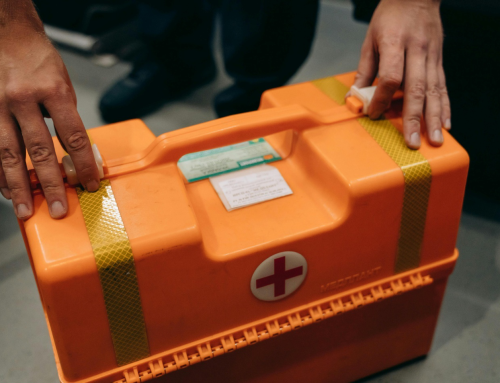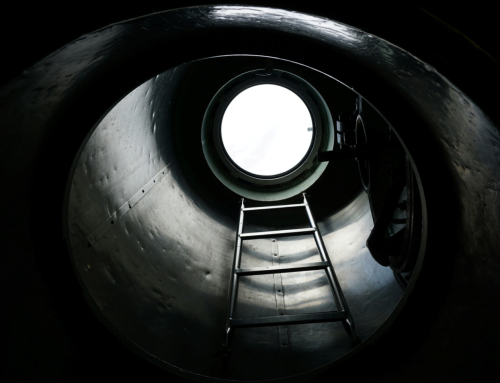This comprehensive guide explores the intricate web of safety protocols encapsulated in the 21-step worksite inspection, a testament to our commitment to elevating safety standards.
From the preliminary identification of hazards to the nuanced evaluation of machinery lockout/tagout procedures, each step in this inspection process is meticulously designed to fortify the defenses of worksites against potential risks. As a beacon of expertise, Metro Safety Training endeavors to empower safety officers, supervisors, and workers with the knowledge and skills necessary to create a culture of safety excellence.
By embracing these 21 steps, worksites can not only meet regulatory standards but also proactively address potential hazards, cultivate continuous improvement, and prioritize the safety and well-being of every individual on the job. Your safety is our priority, and this guide serves as a compass for navigating the intricate landscape of worksite inspection with diligence and expertise.
1. Preliminary Hazard Identification
Before any worker steps onto a worksite, a preliminary hazard identification sets the stage for a comprehensive inspection. Identifying potential hazards, whether related to the nature of the work, environmental conditions, or specific equipment usage, forms the foundation for subsequent safety measures. At Metro Safety Training, we emphasize the importance of a meticulous preliminary assessment to ensure that the worksite is free from immediate dangers.
2. Fall Protection Measures
Fall protection training in Surrey, an integral part of our safety courses, underscores the significance of worksite fall protection. The inspection process delves into the adequacy and functionality of fall protection systems, ensuring that guardrails, safety nets, and personal fall arrest systems are in place and meet regulatory standards. By integrating fall protection measures into the worksite inspection, potential risks associated with working at heights are mitigated.
3. Confined Spaces Safety Check
For worksites involving confined spaces, a specialized inspection focusing on confined space safety is imperative. Workers entering confined spaces encounter unique risks, ranging from atmospheric hazards to restricted entry and exit points. Our worksite inspection protocol meticulously examines confined spaces, emphasizing proper ventilation, atmospheric monitoring, and emergency rescue procedures.
4. Equipment Inspection
The inspection extends to all equipment deployed on the worksite. This includes tools, machinery, and personal protective equipment (PPE). Thorough equipment checks verify that tools are in proper working condition, that machinery meets safety standards, and workers have access to and are utilizing the appropriate PPE. Incorporating equipment inspection into the process identifies and addresses potential hazards arising from faulty tools or machinery.
5. Emergency Response Preparedness
Worksites should be equipped to handle emergencies effectively. This step in the inspection process assesses the readiness of the worksite for prompt emergency response. From the availability of First Aid safety training in Surrey and OFA kits to the accessibility of emergency exits, this inspection ensures that workers can receive immediate assistance in the event of an accident or health-related incident.
6. First Aid Level 1 and Level 2 Protocols
Integral to worksite safety is the availability of individuals trained in First Aid Level 1 and Level 2and Occupational First Aid Level 3 Renewalprotocols. A thorough inspection ensures that designated First Aid responders are present, adequately trained, and equipped to handle common worksite injuries. This step in the process emphasizes the immediate medical assistance that can be provided until professional help arrives.
7. Compliance with Regulatory Standards
Worksite inspections conducted by Metro Safety Training prioritize adherence to regulatory standards. This includes compliance with local occupational health and safety regulations. Inspectors verify that the worksite meets the stipulated standards, reducing the risk of legal repercussions and ensuring a commitment to worker well-being.
8. Workplace Safety Training in Surrey
A cornerstone of Metro Safety Training’s offerings is workplace safety training in Surrey. The inspection process assesses whether workers have undergone relevant safety training, emphasizing the importance of ongoing education. By ensuring that workers are well-versed in safety protocols, this step contributes to the overall safety culture of the worksite.
9. Hazard Communication Protocols
Effective communication of hazards is crucial for worksite safety. The inspection includes an evaluation of hazard communication protocols, ensuring that workers are informed about potential risks. From signage indicating hazardous areas to clear communication of emergency procedures, this step fosters an environment where workers are aware and prepared.
10. Continuous Improvement Measures
The final step in the worksite inspection process is dedicated to continuous improvement. Metro Safety Training advocates for a proactive approach to safety. Inspectors assess whether the worksite has mechanisms in place for ongoing evaluations, feedback loops, and continuous improvement initiatives. By instilling a culture of continuous improvement, worksites can adapt to evolving challenges and prioritize the well-being of their workforce.
11. Ergonomic Assessment
Consideration of ergonomic factors is pivotal in maintaining the well-being of workers. This step involves evaluating the ergonomic design of workstations and equipment to prevent musculoskeletal issues. By ensuring that workspaces are ergonomically sound, the inspection aims to enhance worker comfort and reduce the risk of long-term injuries.
12. Electrical Safety Check
For worksites involving electrical equipment, a dedicated inspection of electrical safety measures is essential. This step assesses the proper functioning of electrical systems, the condition of wiring, and the presence of safety measures such as circuit breakers and grounding. By addressing electrical hazards, the inspection contributes to the overall safety of the worksite. Learn more about our workplace safety training and OFA training courses here.
13. Environmental Considerations
Environmental factors, including weather conditions and air quality, can impact worksite safety. This step involves assessing the current environmental conditions and determining whether they pose any risks to workers. By incorporating environmental considerations into the inspection, worksites can implement additional safety measures when necessary.
14. Fire Safety Measures
A comprehensive inspection includes an evaluation of fire safety measures on the worksite. This encompasses the availability and functionality of fire extinguishers, emergency exits, and evacuation plans. Verifying that workers are familiar with fire safety protocols adds a layer of protection against potential fire hazards.
15. Training Records and Certification Checks
As part of the final steps, the inspection reviews the training records and certifications of workers. This ensures that employees operating on the worksite have completed mandatory safety training and possess the required certifications for their roles. Verifying training compliance enhances the overall competence of the workforce in adhering to safety protocols.
16. Chemical Safety Evaluation
For worksites involving the use of hazardous chemicals, a thorough inspection of chemical safety measures is crucial. This step ensures that proper storage, labeling, and handling procedures are in place. Evaluating the availability of Material Safety Data Sheets (MSDS) and providing adequate training on chemical hazards enhances overall safety.
17. Security Protocols
Security considerations are paramount to safeguarding both personnel and assets. This step involves assessing security measures, such as access control, surveillance systems, and emergency response procedures in the event of security threats. By incorporating security into the inspection, worksites can mitigate risks related to unauthorized access and potential criminal activities.
18. Contractor Compliance Check
If contractors are engaged in worksite activities, a dedicated inspection checks their compliance with safety standards. This includes verifying that contractors possess the necessary certifications, adhere to safety protocols, and have a clear understanding of worksite-specific hazards. Ensuring contractor compliance contributes to the overall safety culture of the worksite.
19. Machinery Lockout/Tagout Procedures
A critical aspect of worksite safety involves the proper implementation of machinery lockout/tagout procedures. This step examines whether clear protocols are in place to isolate energy sources during maintenance or servicing of machinery. Verifying that workers are trained in and consistently follow lockout/tagout procedures mitigates the risk of unexpected machinery starts and enhances overall workplace safety. Check out our Confined Space Safety and OFA Training courses in Surrey now.
20. Respiratory Protection Evaluation
In worksites where airborne contaminants are present, an assessment of respiratory protection measures is paramount. This step ensures that workers have access to and correctly use respiratory protection equipment when needed. By examining the adequacy of respiratory protection protocols, the inspection addresses risks associated with inhaling hazardous substances, contributing to a safer working environment.
21. Review of Near Miss Reports
Incorporating a review of near-miss reports into the inspection process adds a proactive layer to safety management. This step involves analyzing records of near misses and assessing the effectiveness of corrective actions taken.
Advancing Safety Excellence with Metro Safety Training
Metro Safety Training remains dedicated to empowering worksites with the knowledge and skills necessary for a secure and productive work environment in Vancouver, Canada. Call us now.










